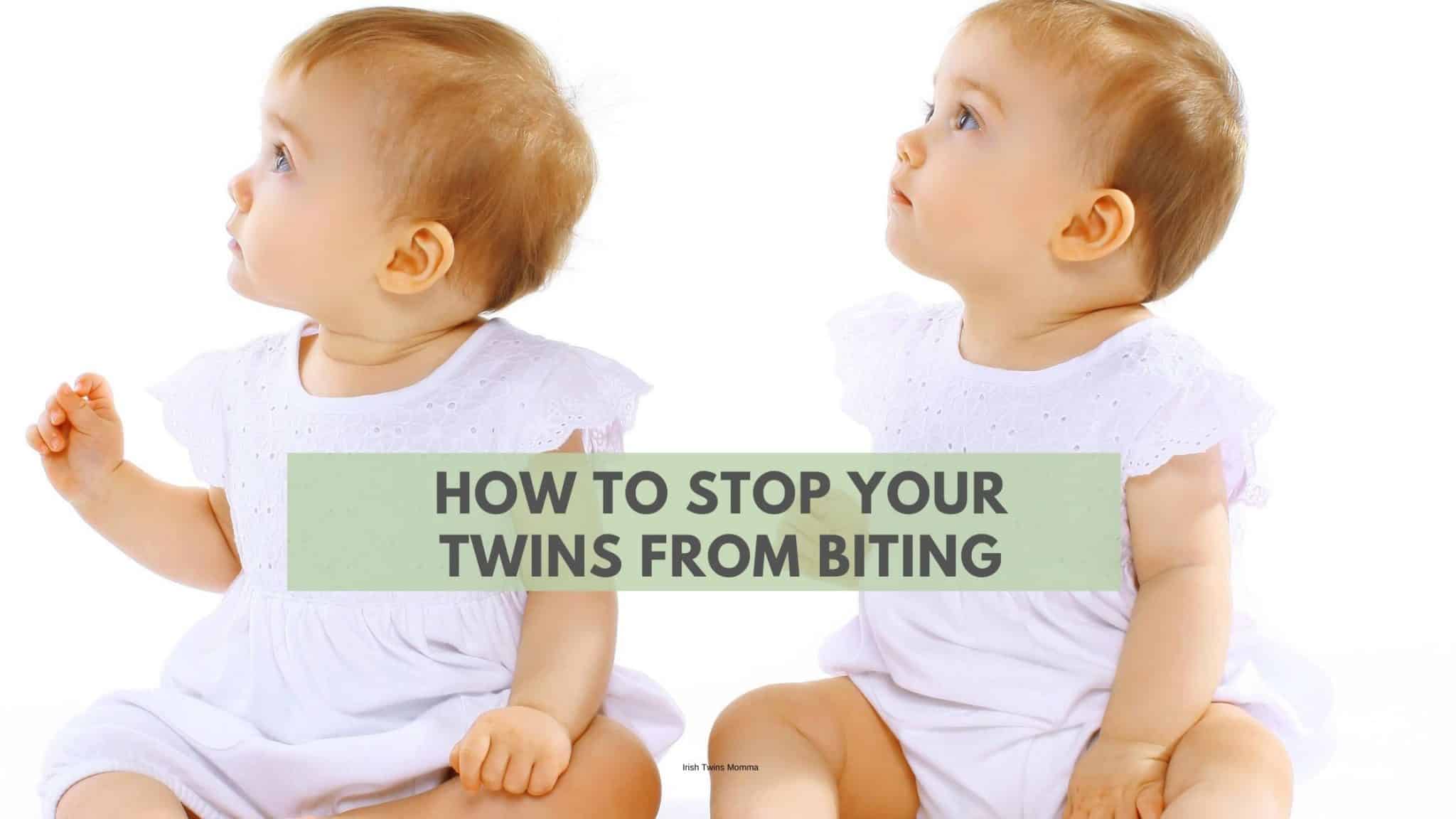This post contains affiliate links. If you click and buy, I may make a commission, at no cost to you. See my disclosure policy for more information.

The interaction between twins should be one of the great joys of parenting multiples. Imagine… two adorable toddlers, smiling and laughing, playing and sharing toys, built-in buddies. However, parents of multiples know that twin interaction isn’t always so pleasant and sweet. While there are plenty of cute moments, there is also plenty of fighting and squabbling as twins compete for space, playthings, and parental attention. And often, one of the most unpleasant aspects of twin interaction are incidents of twins biting.
It’s not uncommon for babies and toddlers to bite. They may bite things, like furniture or toys, but sometimes they also bite other people. While parents, siblings, and daycare companions are the usual victims, multiples are likely to be a frequent target for each others’ bites. Because they spend so much time together and are often within close vicinity, it is very common for twins to bite each other.
Why Twins Bite
Between the ages of one and three years old, many children will engage in biting. While it’s most common in toddlers, younger babies and older children may also bite.
There are a variety of reasons why children bite. Sometimes there are physical reasons. With a mouth full of sore teeth and gums, biting can provide some physical relief from teething. Unfortunately, the target of biting can be another person, rather than a teething toy or other product that would provide relief. Another reason that babies and children bite is that their mouth is an important tool for exploration, and sometimes that exploration includes biting down on items.
In other cases, a bite occurs because of emotional causes. Lacking the communication skills to express frustration, anger, or irritability, a young child seeks to vent their feelings with a bite. Biting may also be a ploy for attention. Even when the result is negative attention, a biter is sending the message, “Hey, look at me! I’m here! Focus on me!”
Little ones may bite simply because they don’t understand that biting hurts. Cognitively, they don’t make the connection between what seems like a natural physical action and the painful reaction from their target.
Tips to Stop Twins From Biting
Now that we recognize some of the reasons for the biting, let’s examine some strategies for ending the behavior. Biting is a behavior that can not be tolerated. Bites are painful, and bite wounds run the risk of infection. Children who bite can be ostracized from social situations or dismissed from daycare centers, nurseries, or schools.
Determine the reason and provide alternatives.
Is your child teething? Look for the telltale signs: drooling; rash or redness around the mouth; loose stools, cough; sore, inflamed gums. If your twins are biting due to teething, offer teething rings or toys that provide comfort.
Is it because they are having difficulty expressing their frustration? Look around and see if it was due to being unable to get something or fighting over a toy.
Respond appropriately.
Don’t reward biting behavior with the attention that will encourage your child in any way. Avoid laughing or any signs of approval. React immediately by firmly saying, “No! We do not bite.” Depending on the age of the child, explain that biting hurts the person that is bitten. Create an opportunity for empathy by encouraging the biter to comfort the victim and to apologize for hurting them.
Whatever you do, please do not bite your child back this is not encouraged.
Timeouts and isolation can be effective.
Separate the biter from the situation, and from his or her victim. For twins, being separated can be a very efficient mode of discipline. For some reason, even though they are intensely fighting, twins and multiples will curtail their behavior in order to remain together.
Encourage the use of words.
Again, the approach depends on the age and ability of the child. Babies and younger toddlers simply won’t have the capability to understand the ramifications of their biting behavior. But you can engage older children in a conversation about the use of words to express feelings or to get what they want.
Model good behavior.
Don’t play-bite, love bite, or pretend to bite each other. It can be difficult for young children to discern the difference between their behavior and affectionate biting.
Make an effort to give your multiples individual attention.
It is difficult to spread out attention and affection among multiple children, especially when parents are busy meeting their every need. But biters who are seeking attention and affection may need a little extra TLC. Make it a habit of spending one on one time with each multiple.
If the biting behavior persists, talk to your pediatrician about additional strategies for behavior management. And be patient. Like many other issues, this too shall pass. As their cognitive and communication skills advance, most children stop biting in favor of more acceptable social behaviors.
Sincerely,



Leave a Reply